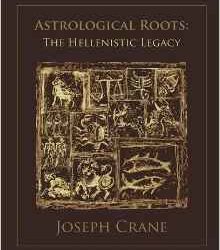Description
While Carter said he intended this book for “beginners”, he didn’t quite mean that. While he does spin you through the basic signs & houses, while he tells you how to construct a chart (both north and south of the equator), if you’ve already grasped that, you’ll be prepared for the amazing details, the practical, hard-won, sharply observed things that you simply won’t find anywhere else. Open the book anywhere & you’ll be surprised. Mutable signs rising tend to slouch. What’s another way to spot a Leo rising? They love fur. Did you ever really want to know what death looks like in a chart? How about infant mortality? Carter gives you the good, and the bad, and so much more as well. Get this book (and the companion, Some Principles of Horoscopic Delineation, and, using them, learn astrology and unlock his other books, among them: Astrology of Accidents, Encyclopaedia of Psychological Astrology, Symbolic Directions in Modern Astrology, and, The Astrological Aspects
But here is Carter, himself. From the Foreword to the first edition of this book:
The present work is designed to give a clear and concise presentation of the essential facts of modern Astrology.
A good deal of experience in teaching the average beginner has convinced me that, while there are several text-books suitable for the use of the more advanced student or of a novice who has the advantage of personal tuition, the majority are either too prolix or too condensed for one who is compelled to be his own instructor. Moreover, Astrology is now to some extent in the melting-pot : on the one hand, many new ideas are being introduced ; on the other, statistical research, such as earlier astrologers could not carry out for lack of sufficient data, has cast considerable doubt on the validity of portions of the rather incoherent mass of tradition that till recent years represented astrological science.
The beginner does not wish to be confronted with controversial matters, however attractive he may find them later. He requires, firstly, a statement of what may be regarded as known astrological facts ; and secondly, an explanation as to how these facts affect human life. It is this that I have aimed at giving him.
An endeavour is made not to neglect the theoretical aspects of Astrology, for the modern student dislikes what appear to him as isolated statements, and looks for a logical and synthetic aspect to our teaching, without, of course, wishing to plunge at the outset into metaphysical speculation.
I trust that the Index will be of considerable use in practice, since it should enable the student to find readily those passages that deal with any matter that may trouble him.
Finally, I would express my sincere hope that this book may be of some value in assisting its readers to grasp something of the true nature and worth of astrological science, both in the commonest and the most sublime aspects of human life. Those who have realized what this may mean to the individual are reluctant to set any bounds to their estimate of the beneficial effects that its universal recognition, in a proper form, would mean to the human race.
Charles E. O. Carter





